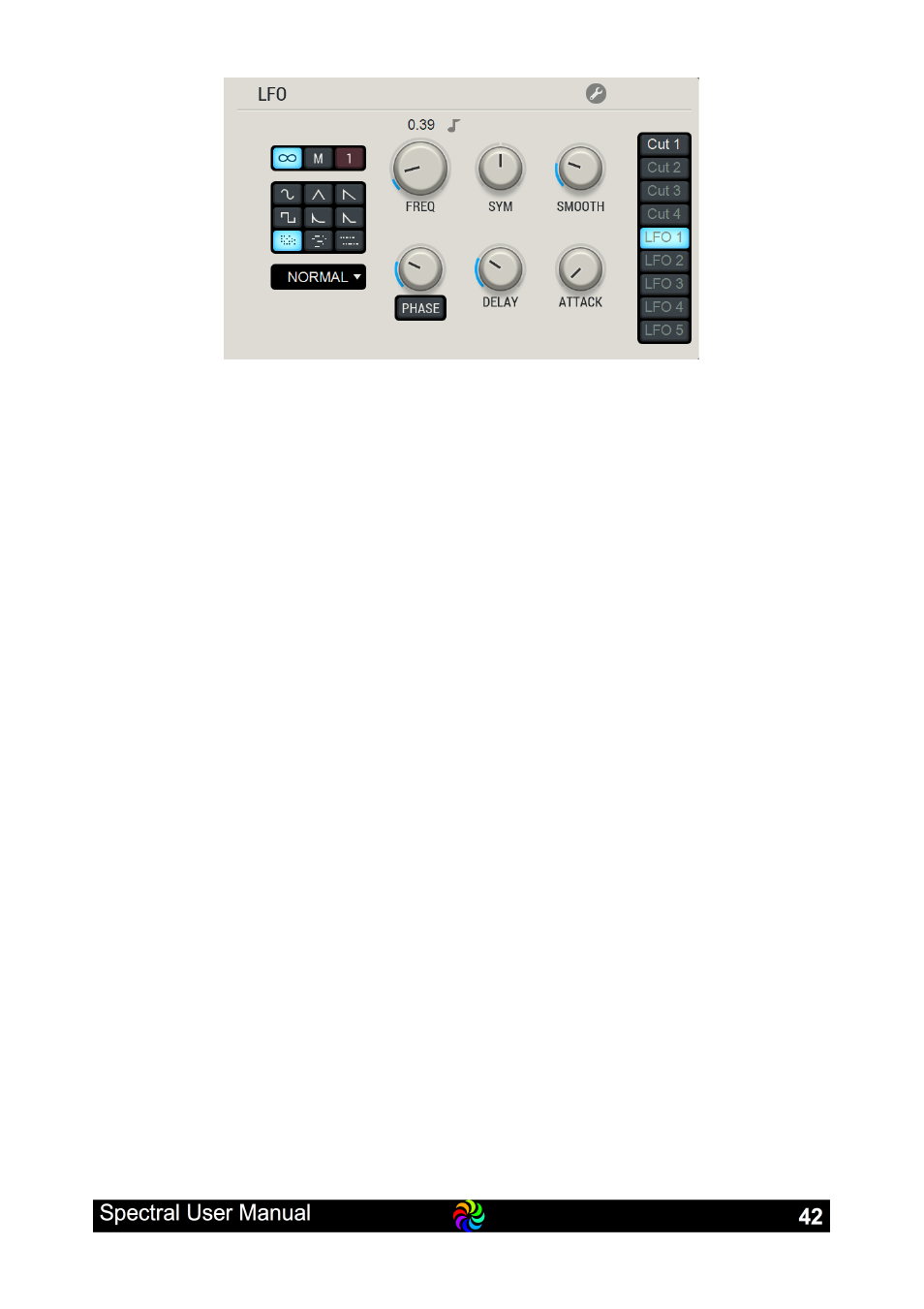LinPlug Spectral User Manual
Page 42

The first three buttons select one out of three overall function modes of the
LFO:
In oo = Infinite state, which is the normal, polyphonic operation mode the
LFO starts with each note independently and from the phase defined by its
Phase parameter, each note you play has its own LFO's, independent from
other voices and the LFO runs as long as the note sounds.
In “M” (Mono) mode one LFO is applied to all synth voices simultaneously,
so all played notes share one permanently running LFO. This is useful
when a modulation should be “in sync” across multiple notes.
Moreover the LFO is synced to the song position, so if you have a 1/4
th
note
tempo set for the LFO, it will start exactly at each 1/4
th
note as the song
plays back.
The third mode “1” is the Single setting. Single is a un-synced, polyphonic
mode, so again each voice has its own LFO. The LFO is again started with
the note, but it only runs a single cycle (or less, depending on the Phase
parameter). This is particular useful for certain effects, for example when
you use the LFO as kind of envelope.
Hint: When applying the LFO Delay parameter, this single cycle can also
happen not right at the start of the note but a bit later, depending on the
actual Delay time.
Right below this operation selector are 9 buttons to directly choose any
available LFO waveform. These shapes are available: Sine, Triangle, Ramp
(Sawtooth), Square(Pulse), Peak (logarithmic), Peak (linear) Noise, Sample
and Hold and Random Pulse.
Polar Below the 3x3 waveform selector is the LFO Polar switch. It can be
any of the states Normal, Uni+, Uni- and Cut+ and Cut-, which are shown in
this image: